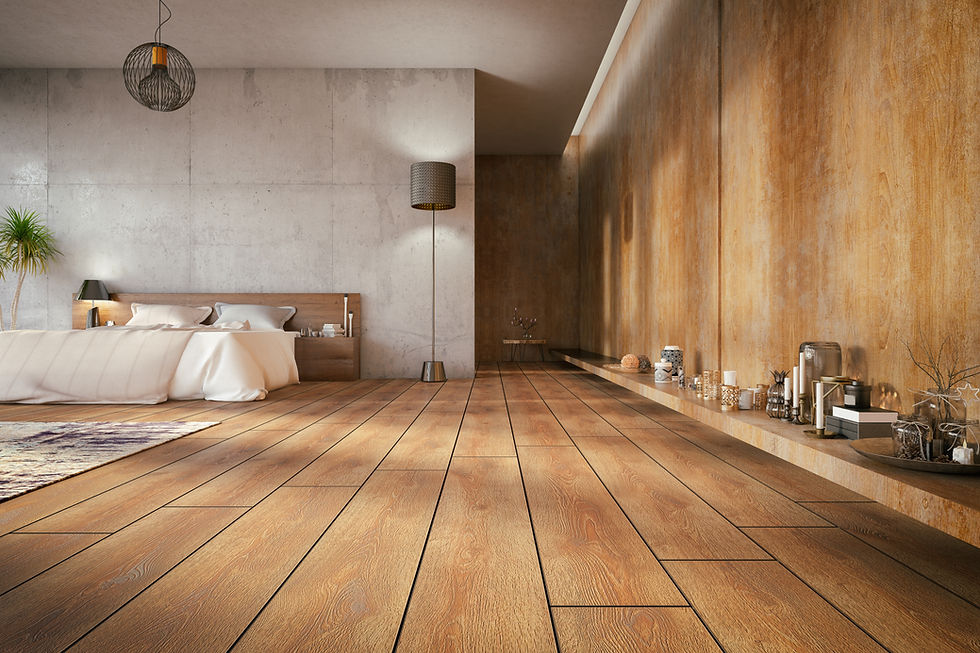While sloping and uneven floors may hold a certain charm in older properties, they are not always ideal to live with - particularly if the problem is stemming from an issue that might get progressively worse. We look at ways to rectify the situation....

There are several reasons why uneven timber floor joists can be problematic in our homes. Floors can drop and become cracked, damaged, or feel bouncy underfoot. Even if this doesn't happen, uneven floors can make built-in furniture hard to fit, and freestanding items likely to wobble or move. Thankfully, there are ways to rectify the problem, but firstly you need to find the cause of the problem.
Possible Problems
Bowing flooring joists
Depending on the age of your property, the timber joists running underneath your floors will have had to cope with significant movement and weight demands over the years. For this reason, it is not uncommon to find that they have bowed, warped, or become generally mis-shapen. Eventually, this will cause the flooring on top of them to reflect their unevenness - tiles can crack, wooden floors will slope and carpet will show up dips and hollows.
Failing brickwork
If the brickwork supporting the joists themselves is damp and crumbling, the joists will become uneven. Before you can replace or repair the timber, the brickwork will need to be replaced, repointed or fixed. Sometimes brick pillars supporting the joists will be the cause; other times it will be the bricks or mortar in the wall that the joists run into.
Rotten joists
Damp and timber are not a good combination. After a while, damp will cause timber to rot - causes of damp might include leaking pipes, rising damp and condensation in poorly ventilated floor voids. Finding the cause is crucial in order to stop the damp - and/or rot - getting worse. Only once the source of the damp has been located can the rot be successfully treated.
Insect infestation
Some insects love damp conditions - particularly woodworm, such as Death Watch Beetle and woodboring weevils, to name but a few. Over time, insect damage can cause issues with floor joists.
Soft, spongy timber will need to be taken out and replaced with new - don't try screwing a new joist into it as it will offer little to no support.
Check for signs of an active infestation - fresh sawdust and dust around the holes is a good sign that this is an ongoing rather than historic issue.
Having put any damp right, you can treat the infestation. It is important to find out what type of woodworm you are dealing with as this will dictate the type of treatment that will be required. Often, localised problems can be treated on a DIY basis using a brush-on solution, but if in doubt, call in a specialist to identify and advise you.
How to fix problems
Rectifying bowed joists
If your joists are in good, sound condition and free of rot, then getting your floor level again is usually pretty straightforward. The easiest and cheapest solution is to buy sawn timber from your local builders' merchants and simply fix it to one side of the joists in need of attention. Use a spirit level to ensure you are fitting the joist straight. Don't forget, before fixing, do check that the new sawn timber itself is not bowed!
Screw the new timber (using timber fixings in pilot holes) the full length of the old joist to really reinforce it.
If the entire floor is uneven, start by levelling the joists at either side of the entire floor, ensuring they are level with one another. You can then run a line between the two to get the rest of the joists at the same new level.
Repairing joist supports
If the brickwork or timber that the joists are running into are themselves damaged, this is the most likely cause of the bowed joist - in which case, it will need to be put right. Any crumbling brickwork can be chopped out and replaced, or the old mortar can be scraped away and replaced with new.
It can be wise to use new joist hangers in this case - galvanized metal brackets that are inserted into the brickwork joints or fixed to a new metal or timber support.
Dealing with rotten timber joists
If the timber joists are rotten, they cannot be used to support the new joists. In this case, use joist hangers and replace the entire joist. If an active woodworm problem is the cause of any rot, it is vital to get this dealt with before you do anything else in terms of getting the floor level. While woodworm is not "infectious", and there's no reason why it would spread form one area to another, it is better to start with a clean slate.
Likewise, if there is an unresolved damp issue, sort it out before beginning work on levelling the floor.


Comments